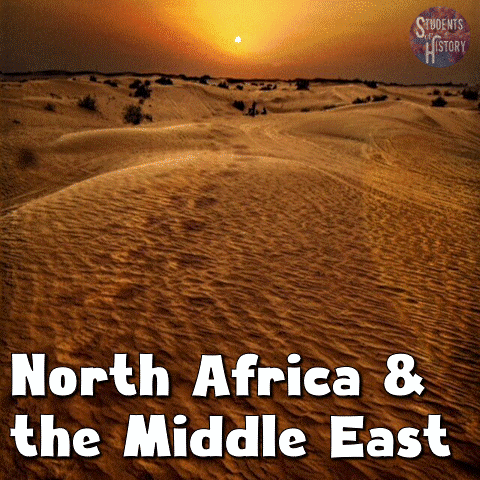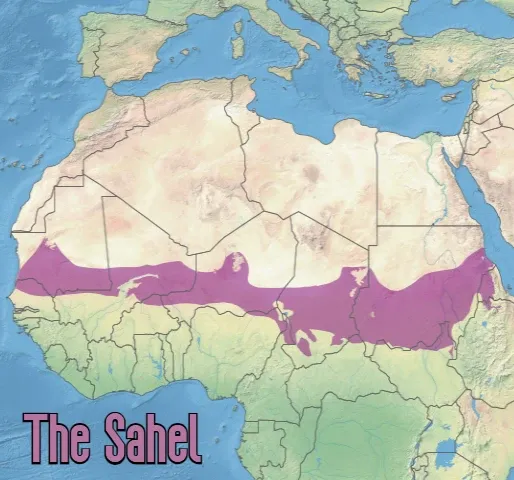The Sahel Region

Africa's Sahel region is transitional zone between the arid Sahara Desert and the more fertile regions to the south. A transition zone is an area between two distinct environmental areas where the geography gradually changes from one to the other.
The Sahel has a semi-arid climate with periodic rainfall. There is more vegetation than in the Sahara desert to its north, but not as much as in the tropical areas in the south.
Geography
The Sahel spans from the Atlantic Ocean in the west to the Red Sea in the east. It covers parts of the countries Senegal, Mauritania, Mali, Burkina Faso, Niger, Nigeria, Chad, Sudan, and Eritrea.
Its landscape consists of semi-arid grasslands, savannas, and occasional tree cover. Rainfall patterns greatly influence vegetation and agricultural productivity. Annual rainfall varies from 4-8 inches in the north of the Sahel to around 28-39 inches in the south.

History
The Sahel has been a hub of cultural exchange and trade throughout history. It has been inhabited by diverse ethnic groups like the Hausa, Fulani, Tuareg, and Songhai for centuries. The region witnessed the rise and fall of the Ghana Empire, Mali Empire, and Songhai Empire over the past 1,000 years. These empires fostered trade, education, and the spread of Islam, shaping the Sahel's culture and political landscape.
Influence of Culture
The cultural landscape of the Sahel is characterized by its diverse ethnic groups and rich traditions. Nomadic pastoralism, practiced by groups like the Fulani, remains a central aspect of Sahelian culture, alongside music, art, and storytelling traditions.
Following the 8th-century Muslim conquest of North Africa, Arab Muslims began leading trade expeditions into the Sahel. These trans-Saharan trade routes that crossed the Sahel allowed Islam to spread to the Mali Empire. The city of Timbuktu became one of the most important Islamic cultural centers in the region.
Human Geography
Human settlement patterns in the Sahel are mostly influenced by the availability of water and the fertility of the land.
Agricultural communities thrive around river valleys and oases, where rainfall is more abundant, while nomadic populations roam the semi-arid grasslands with their herds. However, challenges today such as desertification and population growth threaten livelihoods and exacerbate resource conflicts.

Economic Development
Economic activities in the Sahel are primarily centered around agriculture, pastoralism, trade, and natural resource extraction. Subsistence farming sustains crops like millet, sorghum, and vegetables, while nomadic herders rely on livestock such as cattle, sheep, and goats for food and trade. However, recurring droughts and land degradation pose significant challenges to economic stability in the region.